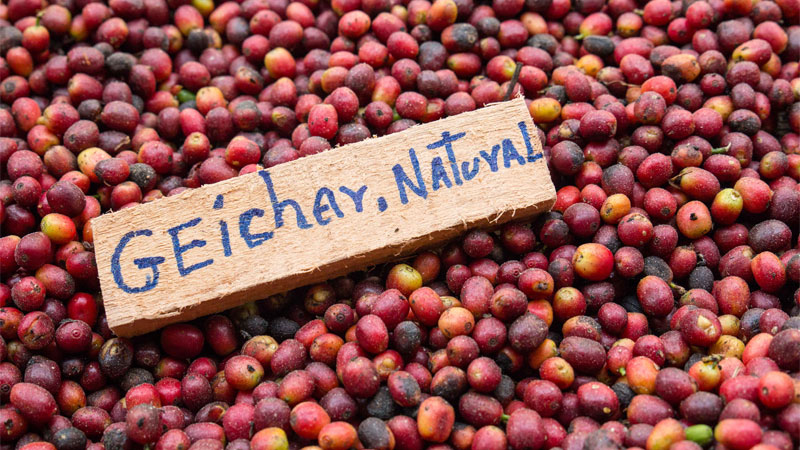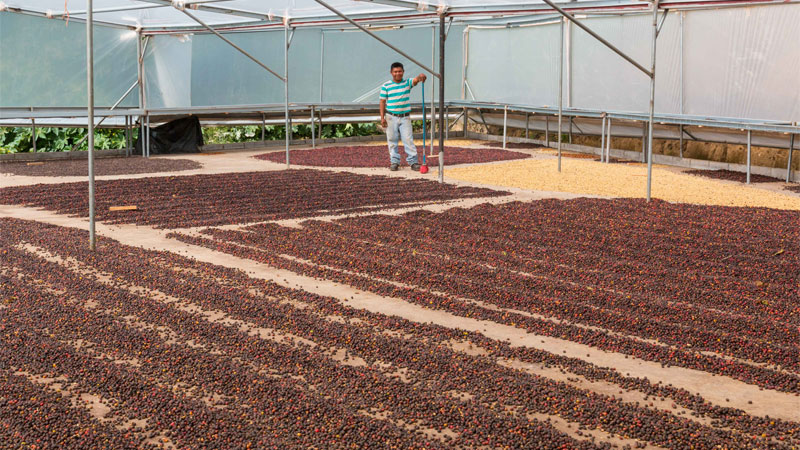Many coffee drinkers experience their morning jolt without giving it much thought. But coffee is far more complex than tossing grinds into a machine and hitting start. In fact, coffee starts with a fruit called a “cherry” whose seeds are removed, dried, and fermented, becoming coffee beans. These are then roasted, packaged, and put on the shelf where we buy them.
The fermentation process is critical to shaping a coffee’s flavor because, like wine, it produces the cup’s acidity and fruit notes through the breakdown of sugars by yeast and bacteria. Because coffee cherries start to ferment soon after picking, how the farmer or local cooperative handles that process has a direct impact on the coffee’s eventual flavor.
Processing methods vary by geography, climate, logistics, and tradition, but the three main types are natural, honey, and washed.
Don't Miss A Drop
Get the latest in beer, wine, and cocktail culture sent straight to your inbox.Natural Coffee Process
Similar to natural wine, natural coffees are processed with minimal intervention, meaning as little as possible is done to alter the naturally occurring fermentation inside the cherry. In fact, the natural coffee process is the oldest technique, requiring minimal water or electricity.
Natural coffees are fermented and dried whole, and fermentation takes place inside each individual bean for up to 30 days (weather permitting). No layer of the cherry is removed until packing for export.
Because of the fruit’s need for arid, warm conditions to dry outside, humidity or rain can pose major problems, such as spoilage. To encourage even drying and air flow, producers rake the fruit on raised beds, patios, or drying tables. Drying coffee is a riskier process than washing it because it requires more attention, and thus more labor, and so poses a higher risk of spoilage or over-fermentation.

Profile: Natural coffees enjoy a special fan club of coffee drinkers who appreciate the heady, wine-like aromas of blue and black fruits. Overripe blueberries or blueberry pancakes are common tasting notes.
Countries: Ethiopia, Yemen, Costa Rica, and Brazil. There’s lots of experimentation happening in the specialty coffee realm because of dried coffee’s unique flavors and minimalist methods.
Honey Coffee Process
In the honey process, the coffee cherry’s skin or pulp is removed within 24 hours of harvest. A percentage of what’s left behind — the mucilage, also called honey — remains on the seed while it dries, with the amount left behind driving the style and flavor of the final coffee. The mucilage ferments on the bean between 18 and 25 days, and poses less spoilage risk than a natural while achieving similar flavor results.
Costa Ricans have taken the honey concept to new heights, employing color terms — yellow, red, and black — to denote the amount of mucilage remaining, which indicates how subtle or intense the flavor will be. Yellow is milder, while black is closest to a natural coffee.
Profile: Often creamy and sweet (in flavor, not sugar) with notes of caramel, burnt sugar, jam, blackberries and blueberries, and even baked and stewed notes like a boozy Barossa Shiraz from a hot vintage.
Countries: Brazil pioneered this technique called pulped natural, but Costa Ricans have elevated the category, which is trending through Central America. Specialty coffee producers also like the nuance this method can create.
Washed Coffee Process
Washed coffee is the most ubiquitous – and potentially the most water-intensive – processing method. Within 24 hours of harvest, cherries have their outer skin and most of the fruit flesh removed mechanically with a depulper machine. The beans then undergo fermentation in an open tank (stainless steel, cement, or even a plastic bucket) for around 18 to 36 hours, sometimes up to 72 hours, or even several days for a “wet” or underwater fermentation.
The fermentation method and amount of water used depends on resource availability and wastewater disposal options (it can be toxic), though in essence, the process breaks down remaining mucilage so it can be removed or rinsed away with more water. This method is a conventional form of processing used all over the world for its ease and efficiency.
Less time required means less labor and less opportunity for things to go wrong, like spoilage mentioned in earlier methods. Additionally, wet processing naturally sorts out bad cherries, which weigh less than “good” cherries and float away down the water channels.
Profile: A terroir-driven cup with clean acidity and bright, articulate flavors depending on origin.
Countries: This method is used in almost every coffee-growing region, with the exception of those with scarce water resources, such as Yemen. If the product’s packaging doesn’t refer to a process, it was likely washed.

